How to impede identification, deceive video analyst and hide face from cameras
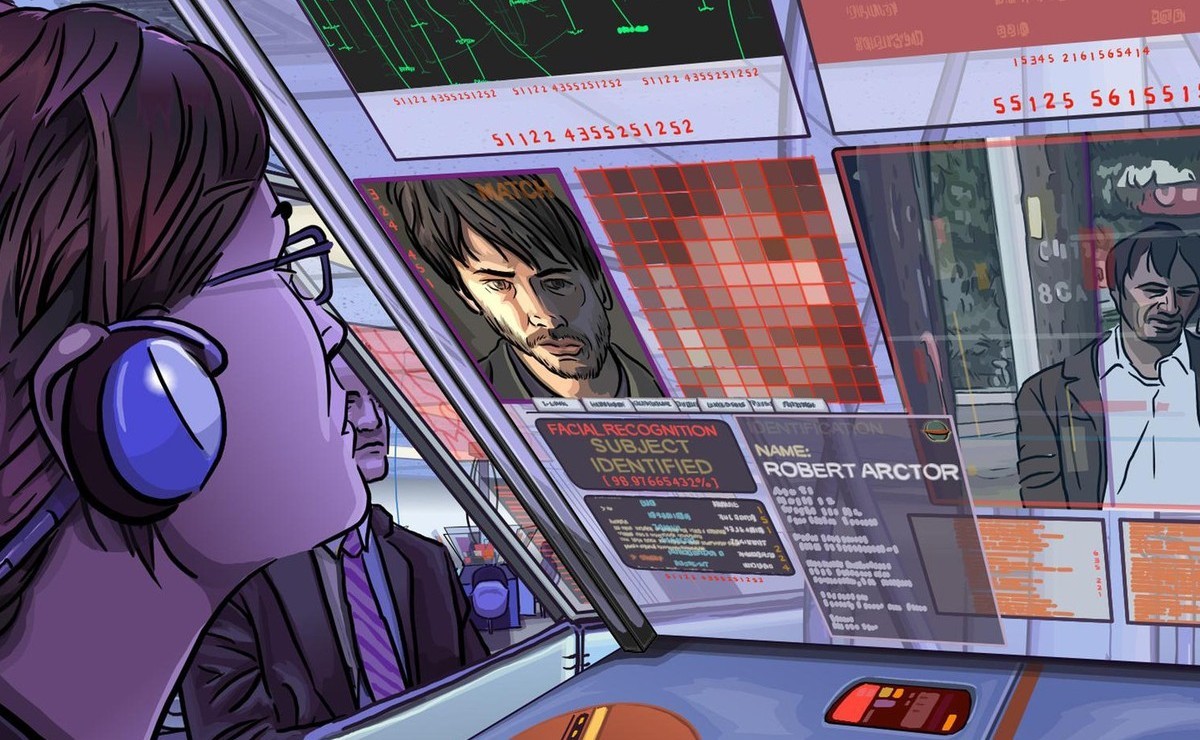
This person, whom we will call Fred, for such is the code name, under which he communicates the collected information while in a chatterbox, cannot be identified by appearance or voice. It looks like a blur and nothing more, is it, friends? “Clouding”, Philip K. Dick.
Cameras do not surprise on the streets, in banks and shops. People put them to control the apartment, car, cottage, playground. Video surveillance ceases to be a means of passive safety, functions of recognition of faces and definition of emotions are added. The more cameras become, the more often hacktivists appear, offering various ways of “protecting” an individual. Phobias in the field of video surveillance led to the fact that some people began to stick the webcam in a laptop.
We decided to sort out this issue. If there is a trend in the world for complete anonymity, then there must be reliable methods for those who do not want to give their data to surveillance cameras. Let's talk about how to cheat video analytics.
The most functional accessory

The combined team of the Tokyo National Institute of Informatics and the University of Technology in Tokyo in 2013 created glasses with infrared LEDs. In the infrared range, the camera LEDs turn the face into a blur of light. More reliably, perhaps, to shine a laser beam directly into the camera, but for this you need to clearly fall into the lens.
')
A more advanced solution in 2015 was the Privacy Visor glasses (in the photo on the left). They are equipped with a sophisticated lens system that reflects, refracts and absorbs light. The technology does not allow the camera to focus, "blurs" the area around the eyes, showing it much brighter. The system identifies a person in ordinary sunglasses, but cannot identify the owner of the Privacy Visor.
In 2016, a start-up appeared, which successfully collected on Kickstarter the amount necessary for the production of glasses, which uses miniature LEDs and a mini-battery. The glasses cause certain suspicions if you wear them at night, but they are definitely safer than the laser mode (nothing looks more weird than a person poking a pointer into the camera).
Clothing as a method of anonymity
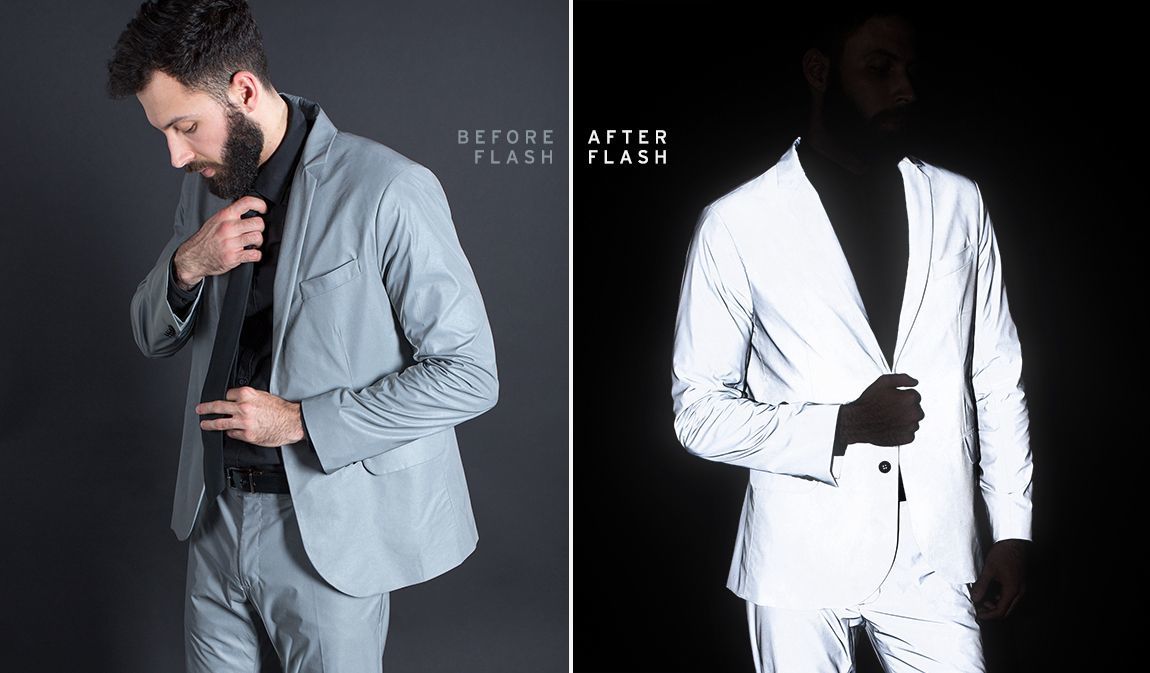
DJ Chris Holmes came up with a special protection against paparazzi, by modifying which you can get protection from cameras. The Flashback collection features clothing made from highly reflective material.

The material contains thousands of spherical pieces of glass, reflecting most of the light when photographing with a flash. As a result, a bright jacket is visible in the photos, and everything else remains outside the sensitivity of the photomatrix.
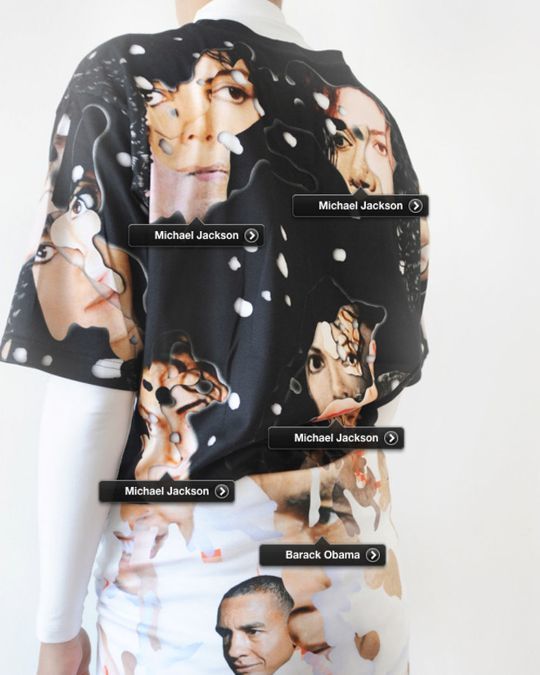
Designer Simon K. Nikil invented REALFACE Glamoflage T-shirts, which depict the faces of famous people. To be honest, even in 2013, this method could only trick the most primitive algorithms.
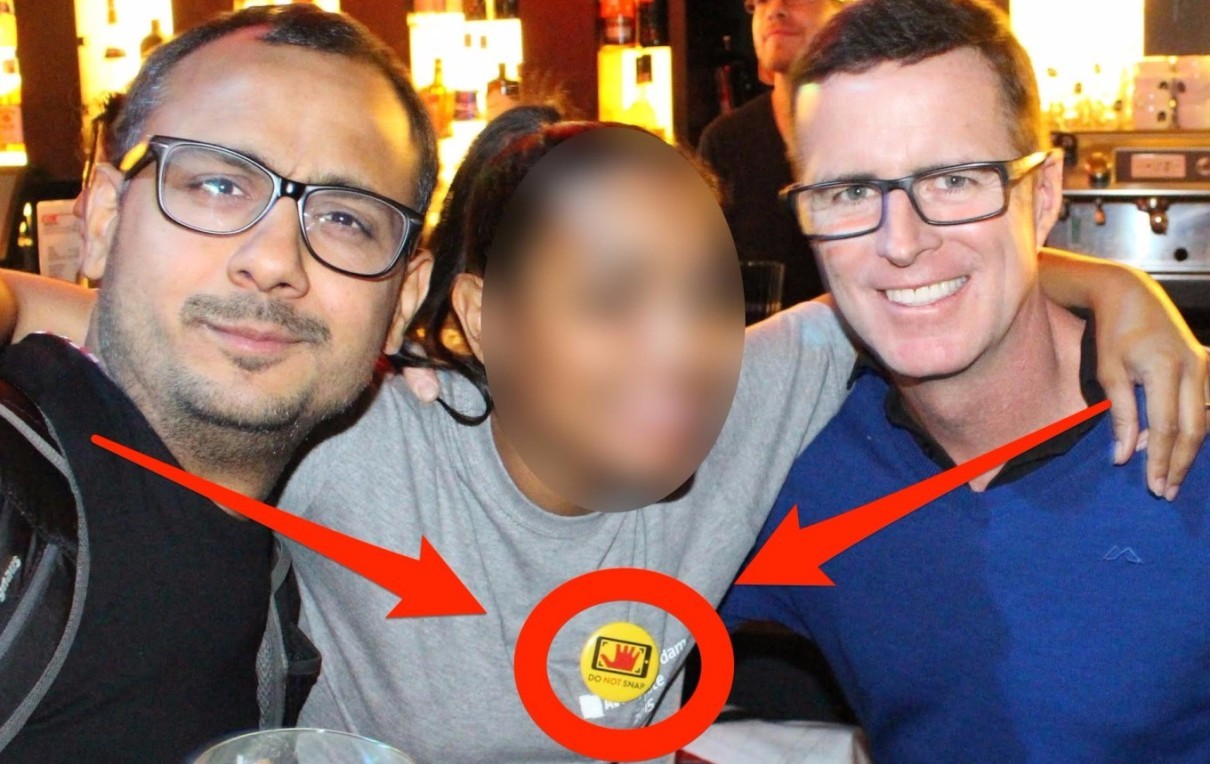
The company AVG Innovation Labs, engaged in the protection of personal data, came up with several solutions that impede personal identification. The icon with a graphic image of "Do Not Snap" is a kind of marker. When a person’s icon is uploaded to the network, the software from AVG reads the symbol and blurs the digitized face of the carrier. However, for his work open source code AVG must be preloaded on the platform (file sharing or social network).
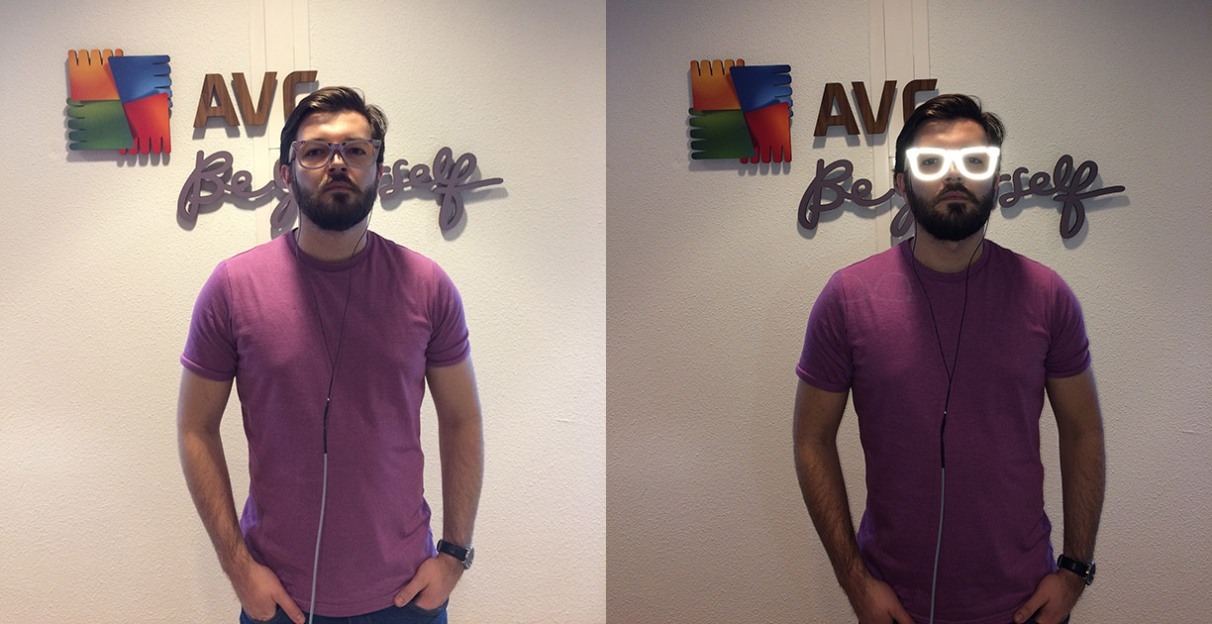
Another product of AVG Innovation Labs is the traditional glasses, covered with reflective material, as in Chris Holmes clothing. They are additionally equipped with infrared emitters.
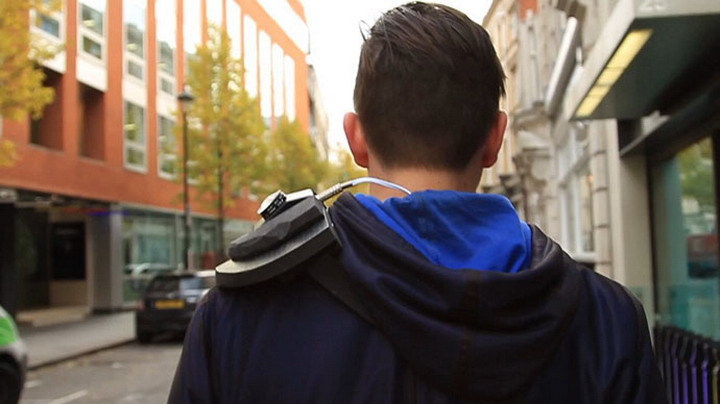
For those who doubt the reliability of the methods described above, the English developer James Bridel has proposed a device that signals that the cameras are in sight. The sensor captures infrared radiation - receiving a signal, begins to vibrate. The logic in this is - you do not want your face to be recognized, do not glow at all in front of the camera. But for some reason, the device is implemented as a bulky shoulder strap.
Positioning error

If someone is going to penetrate the secret factory SkyNet, in which robots go to patrol instead of human guards, then it will be enough to just cross the algorithm for generating random images with the pattern recognition system and print the result in the form of a mask on a 3D printer. As a result, you will have a set of frozen specific signs that will be understandable to the computer vision program, but remain meaningless to people.
Artist Sterling Crispin laid out a collection of data masks , created specifically to trick face recognition algorithms in outdoor surveillance cameras. This method allows you to deceive only the algorithm for which the mask was made, and it is definitely useless against people.
Chameleon in the urban jungle

Designer Martin Bakes, who works at the intersection of high technology and art, came up with a balaclava with a pixel-shaped image of Pixelhead’s human head. The project does not have any practical benefits, but it helped inspire several creatives.

Balaclava is noticeable in urban environments, so privacy activists choose an orthopedic face mask. This mask is so high quality that the chances of being identified on the street are quite low, until no one starts looking at you intently in the face. The camera will probably not notice that your lips do not move.
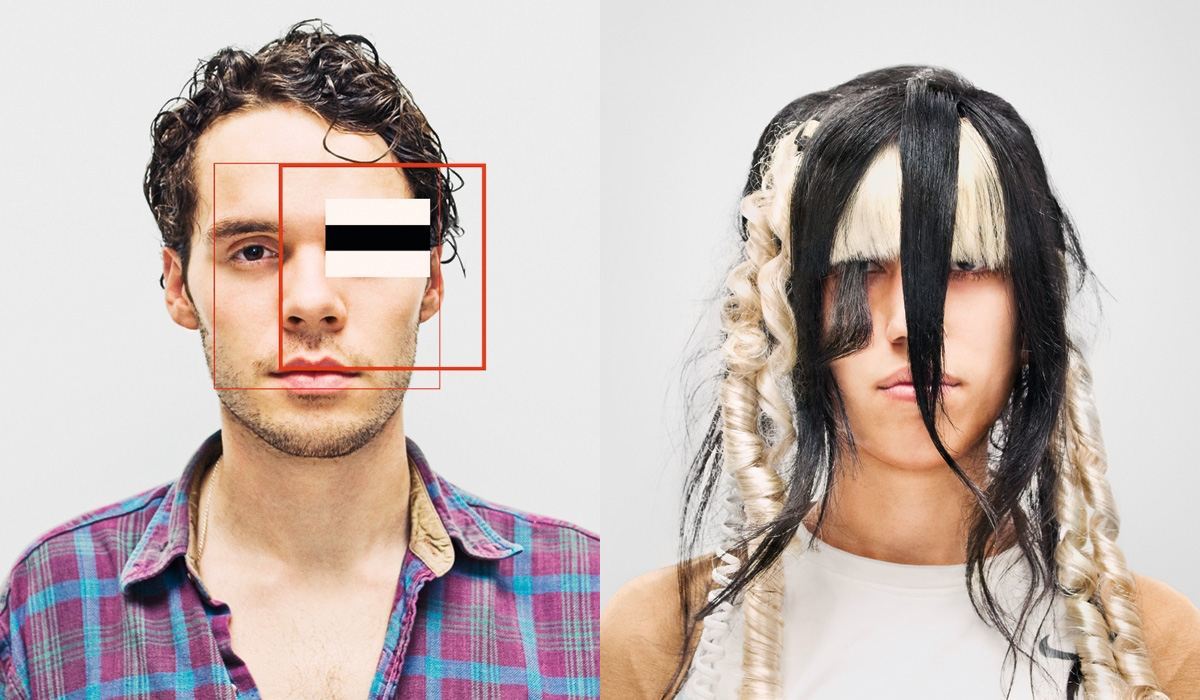
Irreconcilable fighter with the system Adam Harvey, using the OpenCV library and scripts in Java and Processing, selected options for hairstyles and makeup that impede the work of face recognition algorithms. This chip worked several years ago, but now sharp contrast lines and spots creating “false targets” do not deceive algorithms.

Adam Harvey also presented the “Stealth Wear” collection, which includes raincoats and capes made from a material that does not transmit thermal radiation. You can partially hide from infrared cameras.

His next project was Hyperface - these are just patterns that imitate facial features for a computer. Patterns overload the algorithm with the data that it is looking for, which leads to disruption of work. Masking is enough to put on clothing to confuse the surveillance camera.
We play thimbles with neural network
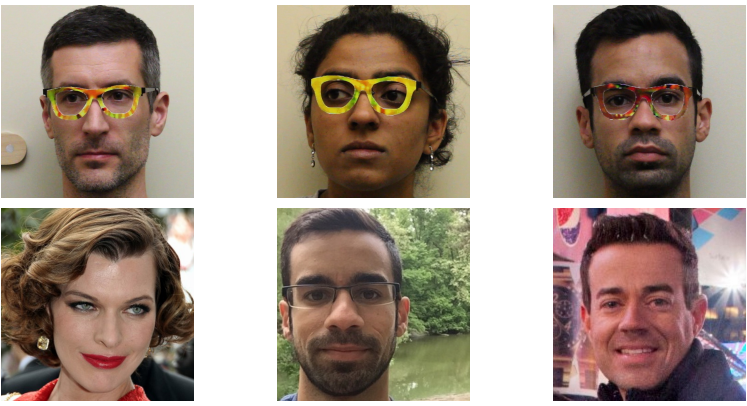
A group of researchers from Carnegie Mellon University found that ordinary glasses with a specially selected pattern have a negative effect on the neural network that recognizes faces. Due to the comparison of the color of the neighboring pixels on the faces around the eyes in systems using the Viola-Jones method, a simple color overlay with a pattern confuses the grid. As a result, the computer "thinks" that you are not you, but someone else (perhaps Milla Jovovich).
Opposition
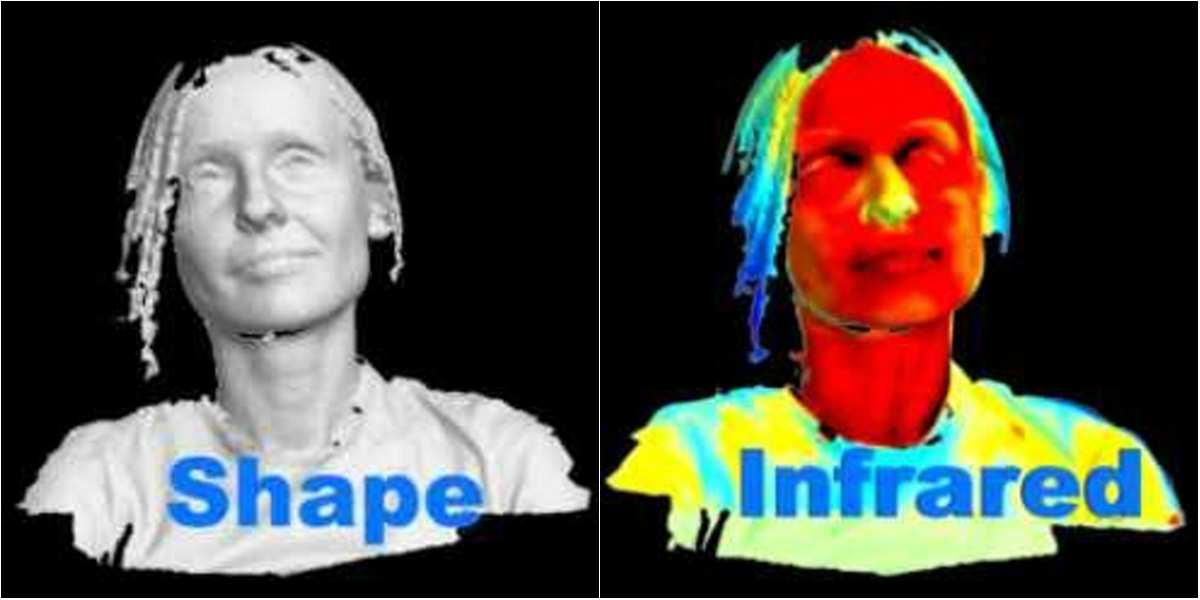
An almost reliable way to hide a face is to wear a hood and big black glasses. A ski mask, wrapped around the head, a scarf or just a package with holes for the eyes protect from popular video analytics systems by 100%. With the same efficiency, they attract the attention of the guards and the police.
At the University of Houston, 10 years ago, they proposed a method that allows them to completely distinguish facial features against foreign objects. The URxD program takes a three-dimensional image of a person using a conventional camera, 3D sensors and an infrared camera. The program creates a three-dimensional model of a person, then imposes on it the texture and data obtained by an infrared camera.
Almost all the tips on the use of IR LEDs do not work . In some cases, the LEDs are not something that does not hide the face, but slightly illuminate, providing a clearer picture - this is because it is necessary to look directly into the camera to illuminate the face. In most cases, for modern cameras to protect against IR illumination, LEDs alone are few. For a long time already there is a HLC mode (High light compensation). Our Nobelic cameras, for example, are able to do this: in automatic mode, a point of bright illumination is monitored and a repeated frame is made with ignoring the data from the matrix cells in this place.
Who said that cameras are required to consider only faces? You can identify a person in a thousand other ways. Created algorithms that take into account clothing, environment, gait. Surveillance cameras get analytics to capture biometric information, allowing you to actually “see” your heart rate using standard recording technology.
And in the end, all this is good. New causes alertness and not everyone likes that every step can be recorded and analyzed. This is a natural process. Farmers in the Midwest were on strike against the expansion of the rail network. Cab drivers on horses harnessed by cabs, gigs, carriages, felt threatened in the first cars. Now in Russia, GMO products are under attack.
Ultimately, the benefits of video surveillance are winning. And for those who have doubts, we are ready to show the benefits ourselves. At the moment, Ivideon is looking for volunteers for queuing detector tests, as well as users of the Shtrikh-M system for the test of a new system of control of cash operations. Write to the post office if you want to find out how video analytics allow you to deal with the occurrence of a queue at your company or monitor potentially dangerous cash transactions. Thanks to those who have already written (someone else could not answer, but soon we will contact).
Source: https://habr.com/ru/post/373255/
All Articles